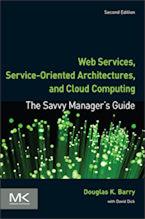Model Driven Architecture (MDA)
The Model Driven Architecture (MDA) is an open, vendor-neutral approach to interoperability using OMG's modeling specifications: Unified Modeling Language (UML), Meta-Object Facility (MOF), and Common Warehouse Meta-model (CWM).
As new platforms and technologies emerge, MDA enables rapid development of new specifications that use them, streamlining the process of integration. The intent of MDA is to provide a comprehensive, structured solution for application interoperability and portability into the future.
The architecture encompasses a range of services already specified by OMG, including Directory Services, Event Handling, Persistence, Transactions, and Security. The core logic of many of these services is already available for multiple implementation technologies; for instance, Sun's J2EE platform uses Java interfaces to CORBA's transactions and security services. MDA should make it easier and faster to design similar multiple-platform interfaces to common services.
MDA also enables the creation of standardized Domain Models for specific vertical industries. These standardized models can be realized for multiple platforms now and in the future, presumably easing multiple platform integration issues and protecting IT investments against the uncertainty of changing fashions in platform technology.
Organization: Object Management Group
More information: MDA page on the OMG website
Context for Model Driven Architecture (MDA)
Related Articles for Model Driven Architecture (MDA)
The Savvy Manager's Guide
Douglas K Barry is also the author of a book that explains Web Services, service-oriented architecture, and Cloud Computing in an easy-to-understand, non-technical manner.
Web Services, Service-Oriented Architectures, and Cloud Computing: The Savvy Manager's Guide (Second Edition)
by Douglas K Barry with David Dick
This is a guide for the savvy manager who wants to capitalize on the wave of change that is occurring with Web Services, service-oriented architecture, and—more recently—Cloud Computing. The changes wrought by these technologies will require both a basic grasp of the technologies and an effective way to deal with how these changes will affect the people who build and use the systems in our organizations. This book covers both issues. Managers at all levels of all organizations must be aware of both the changes that we are now seeing and ways to deal with issues created by those changes.

